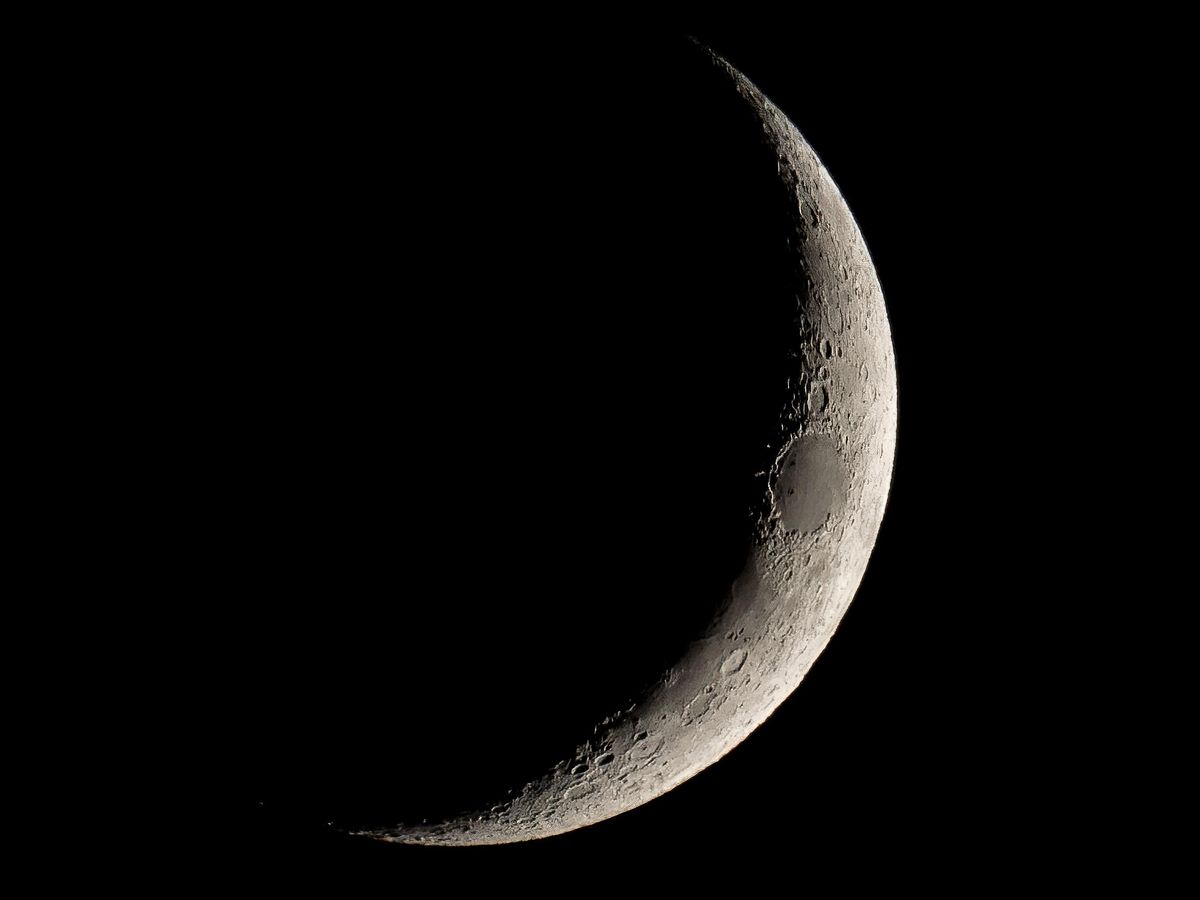A team of Chinese researchers are planning to use the moon as a shield to detect otherwise hard-to-observe low frequencies of the electromagnetic spectrum and open up a new window on the universe. The Discovering the Sky at the Longest Wavelengths (DSL) mission aims to seek out faint, low-frequency signals from the early cosmos using an array of 10 satellites in lunar orbit. If it launches in 2025 as planned, it will offer one of the very first glimpses of the universe through a new lens.
Nine “sister” spacecraft will make observations of the sky while passing over the far side of the moon, using our 3,474-kilometer-diameter celestial neighbor to block out human-made and other electromagnetic interference. Data collected in this radio-pristine environment will, according to researchers, be gathered by a larger mother spacecraft and transmitted to Earth when the satellites are on the near side of the moon and in view of ground stations.
The mission aims to map the sky and catalog the major sources of long-wavelength signals—the last, largely undiscovered area of the electromagnetic spectrum—according to a paper on the DSL mission by Xuelei Chen and others at the National Astronomical Observatories and the National Space Science Center, two institutions under the Chinese Academy of Sciences.
“A mission like this being in lunar orbit could make a scientific impact, particularly on cosmic dawn and dark ages science,” says Marc Klein Wolt, managing director of the Radboud Radio Lab in the Netherlands and a member of the Netherlands-China Low Frequency Explorer (NCLE), aboard the Chinese Queqiao relay satellite.
“When you open up a new window on the universe, you’re going to make new discoveries, things that you don’t know about yet—the unknown unknowns.”
—Marc Klein Wolt, Radboud Radio Lab, Netherlands
Detecting the cosmic dark ages (the time before the first stars formed and began to shine) and the cosmic dawn (when the first stars and galaxies formed) requires making observations of frequencies between 10 and 50 megahertz. Signals emitted by hydrogen atoms during these early cosmic eras have been stretched out over cosmic timescales to much longer wavelengths across 13 billion years of travel time. Radio astronomy of this kind is extremely difficult on Earth as the ionosphere interferes with or completely blocks such ultralong wavelengths.
“To measure the 'cosmic dawn' signal, or even the 'dark ages' signal, which is even more difficult, you have to be in a really quiet environment,” Wolt notes.
The satellites could, over time, measure the primordial distributions of hydrogen at several different epochs in the early life of the universe, says Wolt. Learning how the distributions changed and evolved over time and grew into bigger clusters of matter to form stars and galaxies would be an important contribution to astronomy.
Heliophysics, space weather, exoplanets, the interstellar medium, and extragalactic radio sources are just some of the other areas in which DSL’s long-wavelength astronomy could make additional new contributions.
“When you open up a new window on the universe, you're going to make new discoveries, things that you don't know about yet,” says Wolt. “The unknown unknowns.”
Astronomers in the United States and elsewhere have proposed setting up telescopes on the far side of the moon to benefit from the radio quiet to make unprecedented observations. Over billions of years, the Earth’s gravity has slowed the rotation of the moon, making it “tidally locked,” meaning the lunar far side now never faces Earth and is shielded from any electromagnetic noise created by terrestrial sources.
The DSL mission will, however, avoid the much greater cost and complexity of needing to land and set up on the moon, nor will it be required to carry radioisotope heating systems to keep electronics warm during frigid two-week-long lunar nights. On the other hand, being in orbit limits the duration of the observations the satellites can make while shielded by the moon.
Yet there are other benefits, too.
“With the train of satellites, you're able to do interferometry observations, so you combine the measurements of the various instruments together. And as they orbit around the moon, they can cover most of the sky every month,” says Wolt.
The mission presents a number of challenges, such as maintaining the satellites orbiting in a precise configuration. It would also be an early example of using small satellites for space science in deep space.
China previously attempted to test interferometry in lunar orbit with two small satellites that launched along with the Queqiao relay satellite in 2018 to support China’s Chang’e-4 lunar far side landing mission, but one of the spacecraft was lost after the burn to take them from Earth into translunar orbit. This next attempt would be much more ambitious.
The DSL team has recently completed the intensive study into the mission and is now applying for entering the engineering phase, according to Chen, targeting a launch in 2025. While the “dark side of the moon” is a misnomer, the silence (and thus at least radio darkness) on the lunar far side could offer unprecedented insight into cosmic mysteries.
Correction 19 Jan. 2022: A previous version of this post stated the DSL mission was Chinese and European. There was a proposal for a similar Sino-European effort, but another team was ultimately selected. The present mission is a Chinese one.
- China Aims for a Permanent Moon Base in the 2030s - IEEE Spectrum ›
- China Gears Up for Ambitious Landing on the Moon's Far Side ... ›
Andrew Jones is a freelance journalist based near Helsinki. He writes about the space industry and technology with a particular focus on China's activities.



